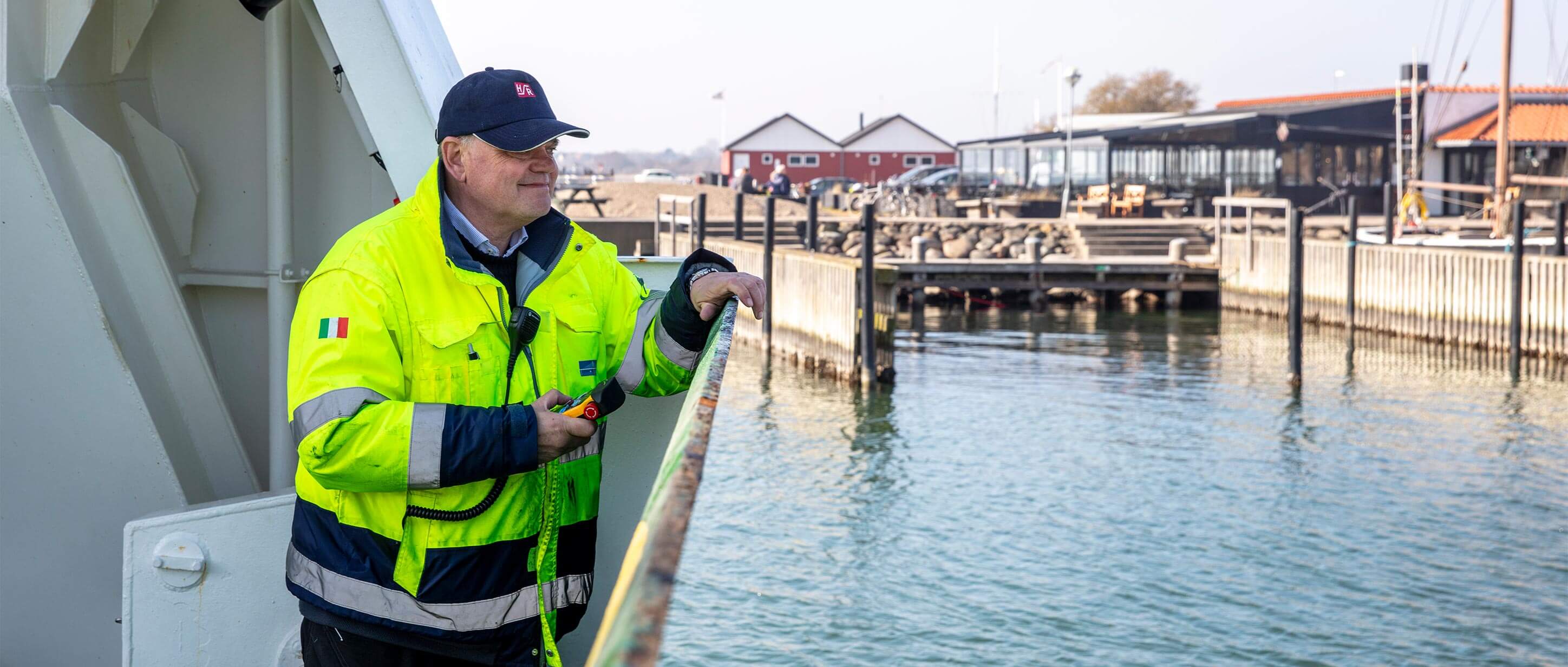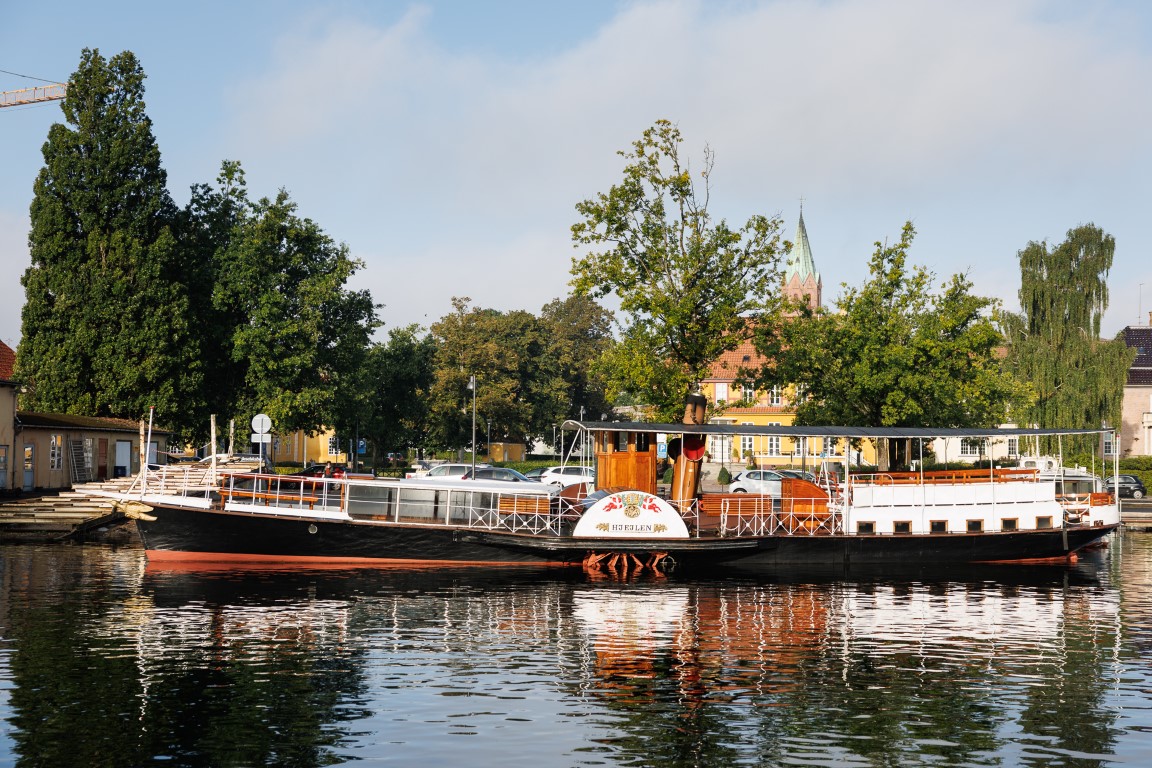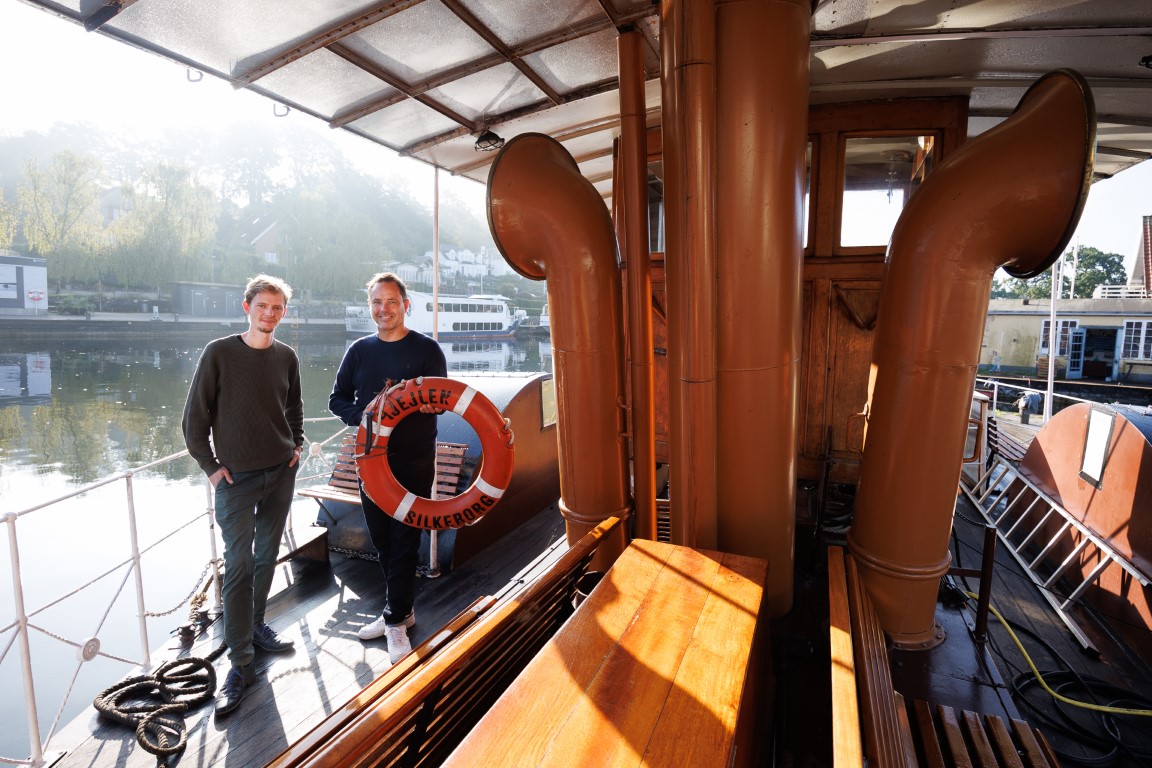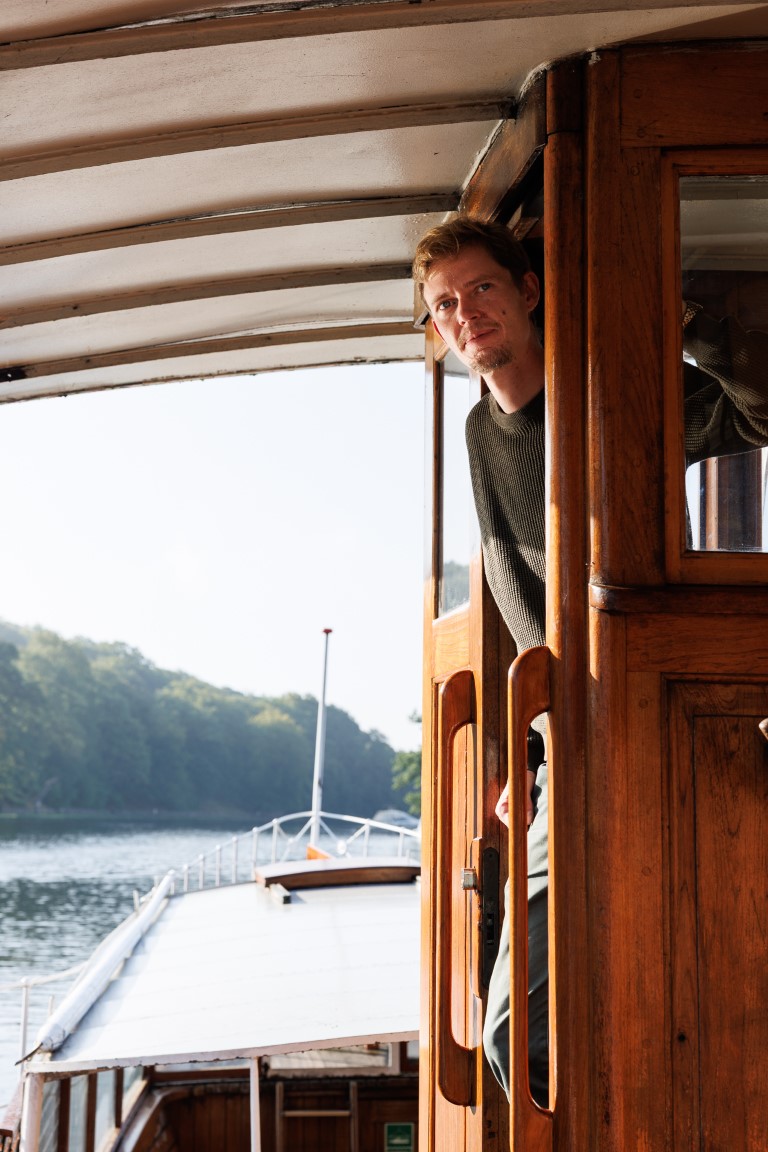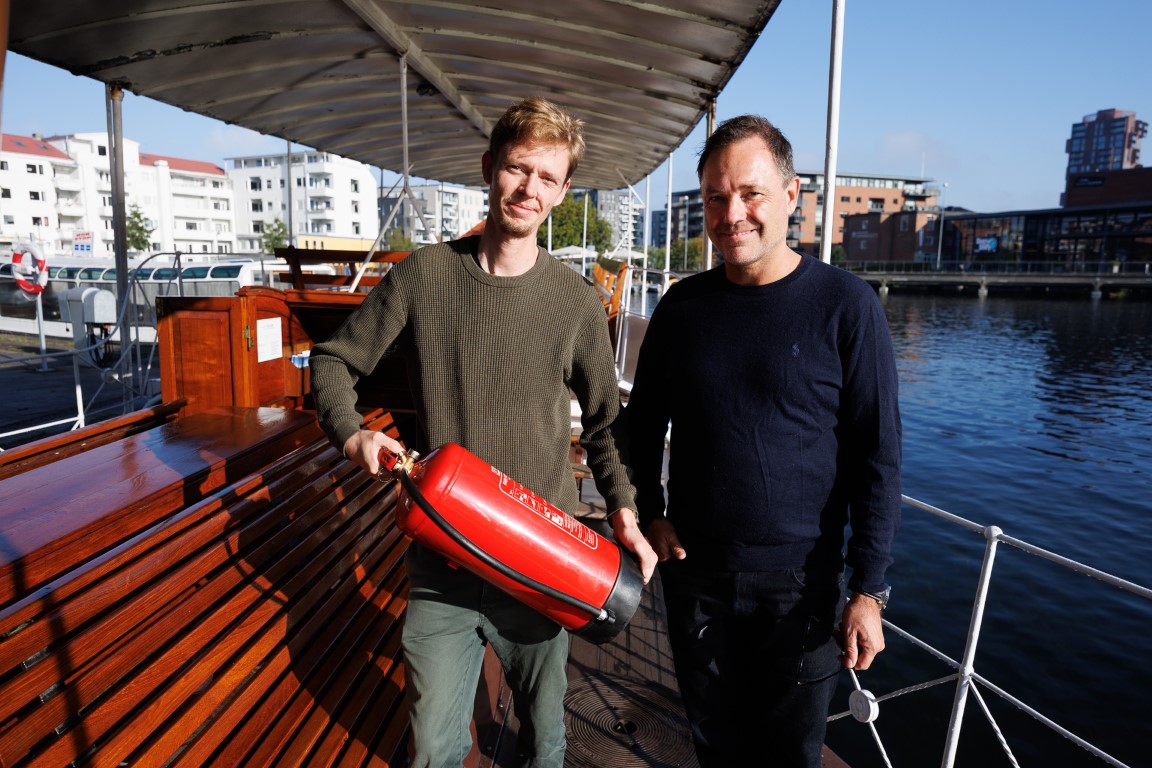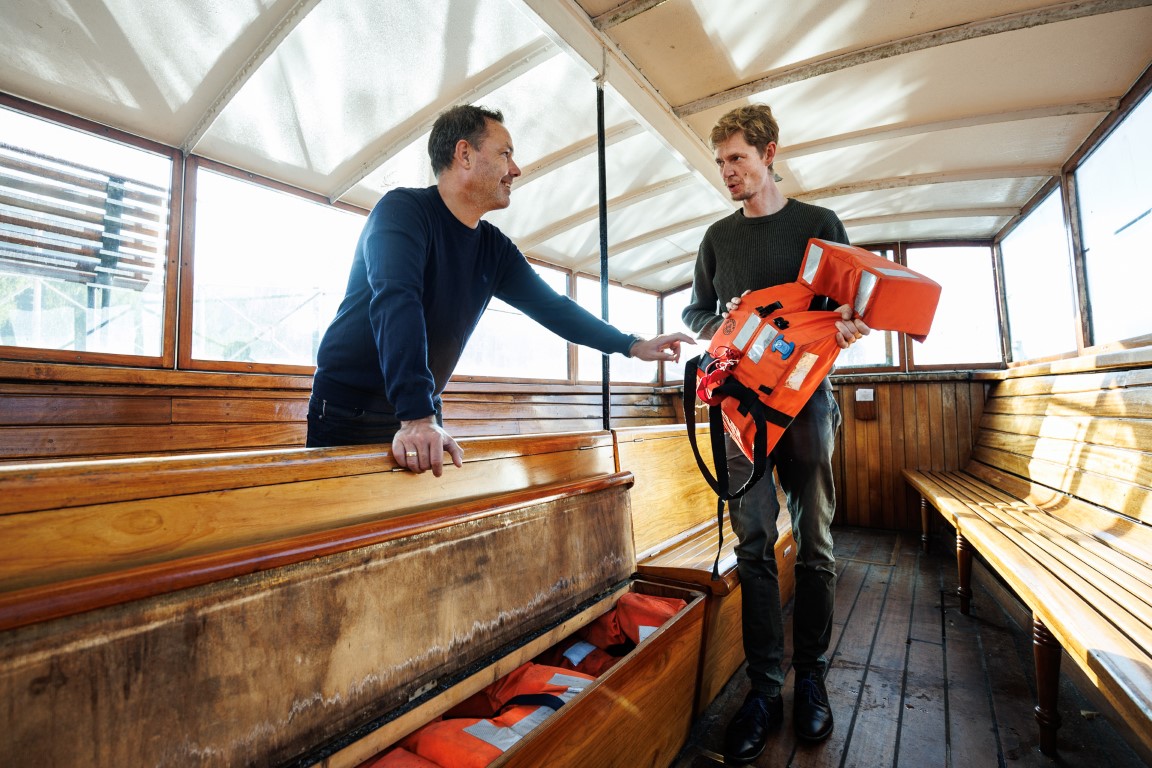The setting is very much historic on the world's oldest, original coal-fired paddle steamer, even involving an open fire on board. Thorough procedures are therefore required to keep safety high.
1861. A year of great significance to the people in Hjejleselskabet and their hometown of Silkeborg in general. At that time, neither railway nor cars were to be found in the area, rather it is the year when the paddle steamer Hjejlen arrived after a long journey from Baumgarten and Burmeisters Skibsbyggeri in Copenhagen (later Burmeister & Wain).
Local businessman Michael Drewsen founded Hjejleselskabet – under the name Hjejlen Inc. – and ordered the ship as early as 1859, for the then princely sum of 10,000 rigsdaler. The vessel was named after the heath bird, the golden plover, which was then very common in the area, and officially christened in front of King Frederik VII, Countess Danner and many other notabilities.
Since then, the ship has traversed the Gudenå and Silkeborg lakes on the waterways between Himmelbjerget, Ry and Silkeborg. Today, this makes Hjejlen the world's oldest, original coal-fired paddle steamer. And all the adjectives are necessary to frame the vessel we are dealing with, as CEO of the Hjejle Society, Tommy Gubi Duelund, explains.
»There are older paddle steamers out there, they’re just not original anymore because they’ve been rebuilt, run on diesel, have had the boilers removed or something completely different. So, ours is the oldest that still runs on coal just like in the beginning,« he says.
Hjejlen was intended for tourists from birth, and after a slow start in the first years, business picked up later. Thus, at the end of the 1800s, the company began to expand the fleet, today consisting of nine ships, eight of which are historical, until Rylen from 1948.
In 1996, the more modern ship, Mågen (the Seagull), was added to meet the growing demand for a more spacious boat to host everything from weddings to business meetings, even during the cooler months. Some of the older ships have previously sailed on coal and switched to diesel, others have switched from diesel to electricity.
During the summer season, it takes about 25 seafaring captains and engineers, as well as a similar number of sailors, to keep the fleet sailing. Everyone is insured through the Danish Shipowners’ Accident Insurance Association – and that's how it should be, Tommy Gubi Duelund emphasizes.
»This stuff just has to be in order. I'm happy to say that I've never really gotten anything out of being a member of the UFDS, because it means that we've never had any serious incidents on our vessels, but of course the insurance must be in place,« he says.
Standard solutions rarely cut it
The corona pandemic necessitated a split, turning Hjejleselskabet into a foundation, but the historical company Hjejlen A/S still exists. Here Christoffer Josefsen is the CEO, just as he is the skipper of Hjejlen itself.
»Hjejlen Inc. owns all the boats, so I do everything I can to ensure that they’re properly maintained both in terms of safety and visual appearance. The major maintenance tasks are in the winter, so I am at the shipyard and involved in the projects, while it is more operation durin the summer, where I spend a lot of time on the water,« he says.
Christoffer Josefsen is a trained navigator sailing tankers for MH Simonsen for just over 11 years before taking up his position in Hjejlen Inc. in January 2023. And as a native of Silkeborg, it has always been in the back of his mind that he would become part of the region's arguably most legendary company.
»Even from the other end of town, I’ve been able to hear the ships whistling and caught the scent of coal, so it felt just right to join the team as a captain and in the workshop. That's why I'm also very keen that the boats are in order, in close cooperation with the Danish Maritime Authority, just as we rely on a lot of local craftsmen for the tasks we need help solving,« he explains.
It requires thorough instruction when a carpenter is to carry out woodwork on a more than 165-year-old coal-fired paddle steamer, where the standard solutions rarely cut it. And the same can be said in relation to on board safety, where the physical conditions are a challenge of their own.
»We do a lot to keep the ship original, and that means, among other things, that we have to light a fire on board, which you wouldn’t normally prefer to do on a ship. That's why we also have a lot of drills and a lot of training in dealing with different conceivable and unthinkable scenarios,« Christoffer Josefsen says.
For the same reason, modern safety equipment is also scarce at Hjejlen, where priority has been given to handheld powder extinguishers, which are nevertheless more useful than a large fire pump.
The size of Hjejlen considered, the crew of four is relatively large, and the division of roles is sharp in case of emergencies. This is also necessary when modern aids such as motorized fire pumps and the like are all but absent, and thorough procedures are the tool at hand.
Christoffer and Tommy talk more on this in part II about Hjejlen.



